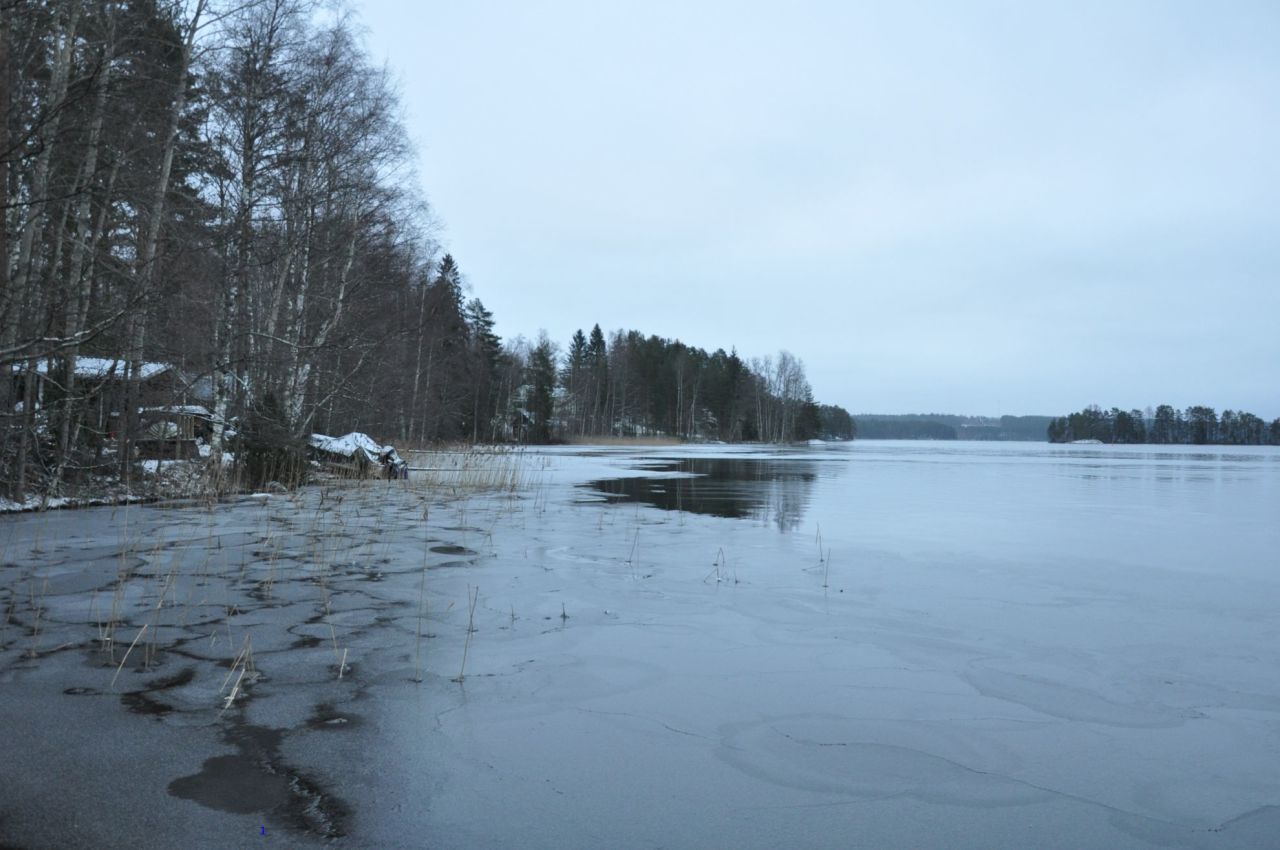The sea freezes and melts
The freezing and melting processes of sea water happen according to physical laws. That´s why they differ a lot from each other. Sea ice is salty unlike the ice in the lakes or rivers.
Cooling
When the air temperatures start to drop in the autumn, the sea water starts to cool as well. As the surface water cools, it becomes heavier. This makes the surface water sink, which generates vertical mixing in the water column that reaches the thermocline. When the autumn gales start blowing the effect of the wind becomes more prominent and the effect reaches deeper. Eventually, the thermocline disappears altogether. In shallow waters, like the Bay of Bothnia, the mixing in the water column reaches the bottom of the sea. In deeper waters the mixing only reaches the halocline. This usually happens during October and November. During November the whole surface layer cools evenly all the way to the halocline. The cooling is the most intense at shallow coastal and archipelago areas. Finally, the sea water reaches the freezing point and the freezing starts.
Freezing
Water becomes solid (= ice) after reaching the freezing point. The density of ice is lower than the density of water, thus ice floats on water. Ice crystals always start to form around a small particle in the water, like an air bubble or an impurity. At first the ice crystals move freely in the water, but since they are lighter than water, they rise to the surface where they get attached to each other, forming an even, thin ice cover called an ice rind. After the ice rind has formed the ice starts growing downwards and the ice cover thickens.

Thickening
The sea ice cover thickens faster when it does not have a snow cover. When ice forms from the sea water and forms more ice on the bottom of an established ice cover, it is called congelation ice. The congelation ice is dark bluish, glass-like and usually its crystals are big. The snow cover on the ice acts as an insulator and makes the thickening of the ice slower. If there is a lot of snow on the ice, the ice cannot carry the weight of the snow and sinks under the waterline. When this happens, the snow gets wet from the sea water that gets on the ice. The wet snow layer in between the ice and snow cover gets slushy and when the temperatures are below zero, the slushy layer freezes. This frozen slushy layer is called snow ice or superimposed ice. Snow ice is a matt and milky white color and its crystals are small and granular. Snow ice is also abundant in air bubbles.
Ice crystals form from fresh water, even in salty sea water. Growing sea ice tends to reject salt. This process is not completely successful and while the ice is forming, between the ice crystals there is salt captured. The lower the temperatures are, the faster is the forming of the ice and more salt gets captured inside the ice in between the ice crystals. As a rule of thumb the sea ice salinity is approximately 1/3 of the salinity of the water from which it was formed. Inside the ice the salt is in the form of brine and it is captured inside cylinder-like saline pockets or cavities. Their diameters are only parts of a millimeter and they are located about 0.5–1 mm from each other. The length of the cavities can be about half of the thickness of the ice cover. Near the ice cover’s upper part, the concentration of salinity is the highest of the ice cover. In the upper part of the ice cover the brine freezes and in the lower part the brine melts the ice which makes the brine move mainly downwards inside the ice. When the brine reaches the bottom of the ice cover it will eventually exit from the ice into the sea water and the salinity of the ice decreases. Salinity is the reason sea ice is more porous than the ice formed from the fresh water.
Melting
When the temperatures rise in the spring, the brine binds water from the inside of the cavities and the brine pockets grow. Spring ice consists of the cores of the ice crystals, which are not attached to each other, but separated by brine pockets that are continuously growing. In springtime, if setting a piece of ice in sunshine, the radars of the sun go through the clear ice crystals but will be absorbed to the salt and other impurities between them. This reveals the crystal structure of the ice. In the last phase of the melting, the ice crystals are in the shape of sticks. This is why the spring ice is not nearly as strong as the ice formed in the autumn. In the end, spring wins and the sea becomes ice free.

22.3.2022